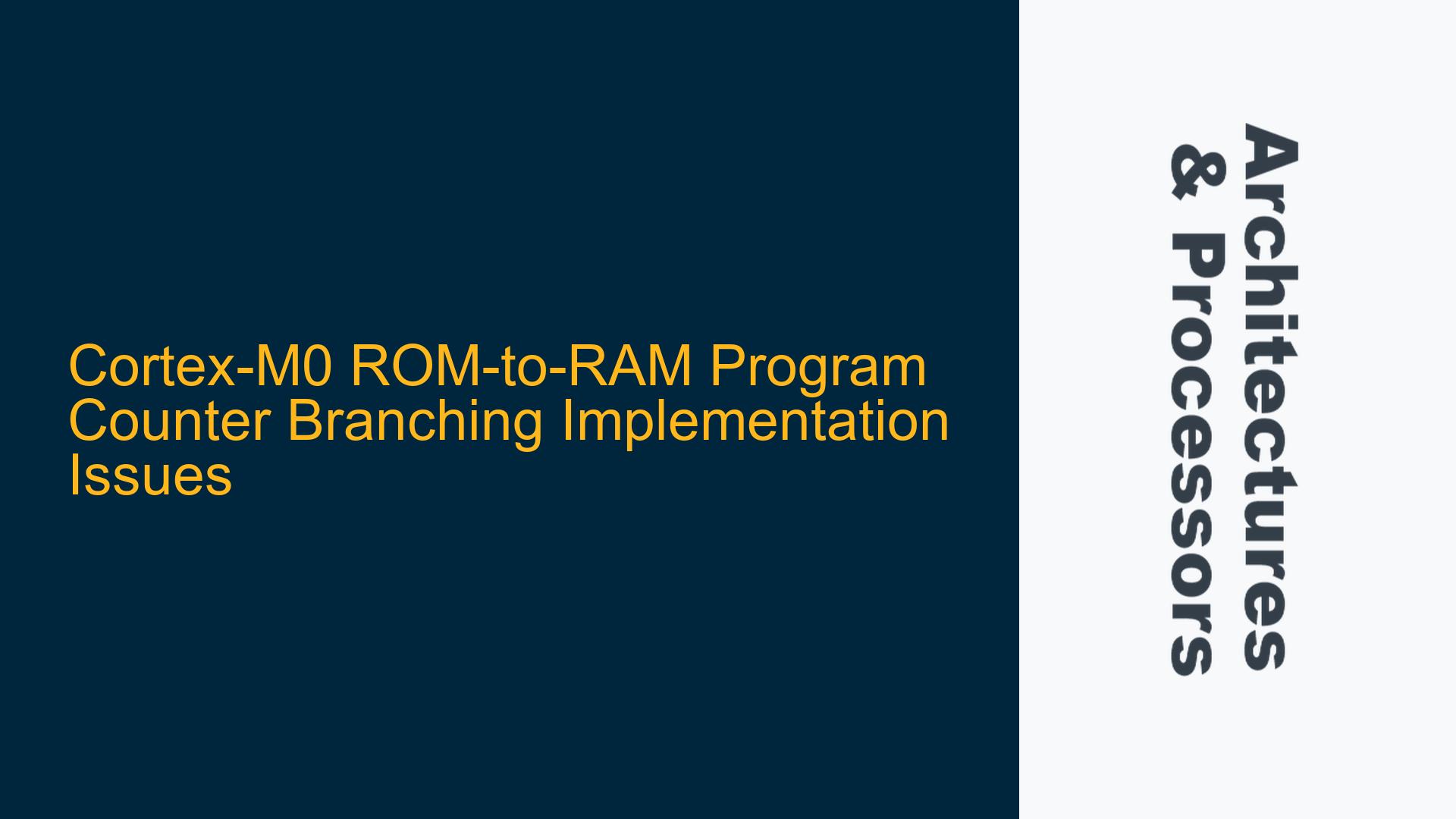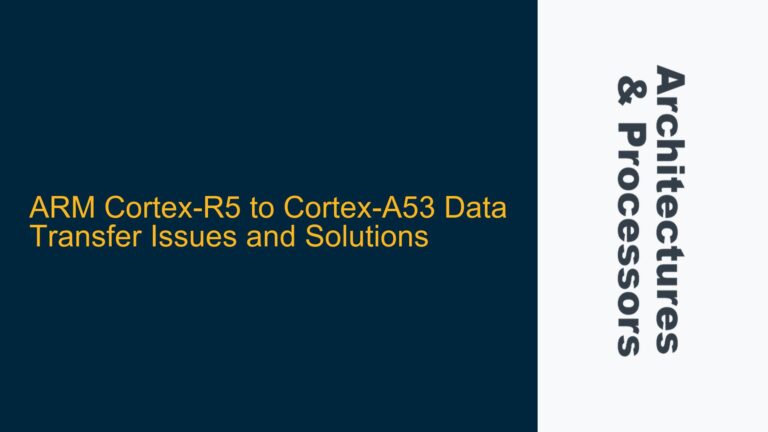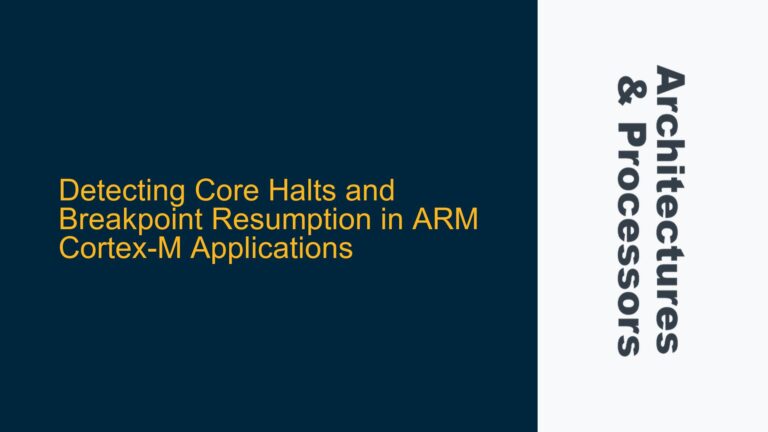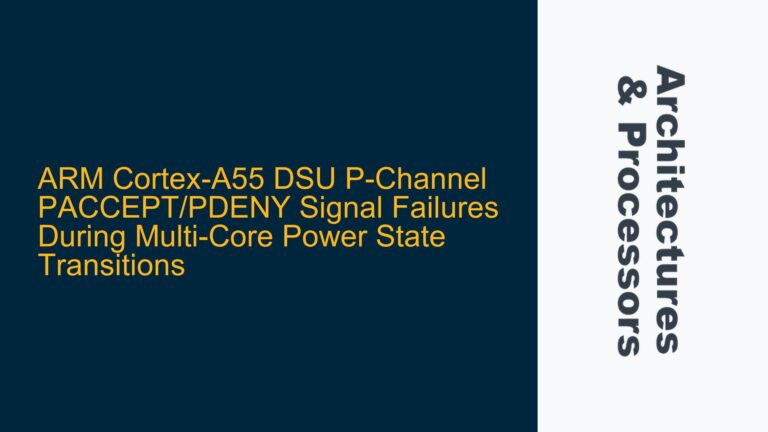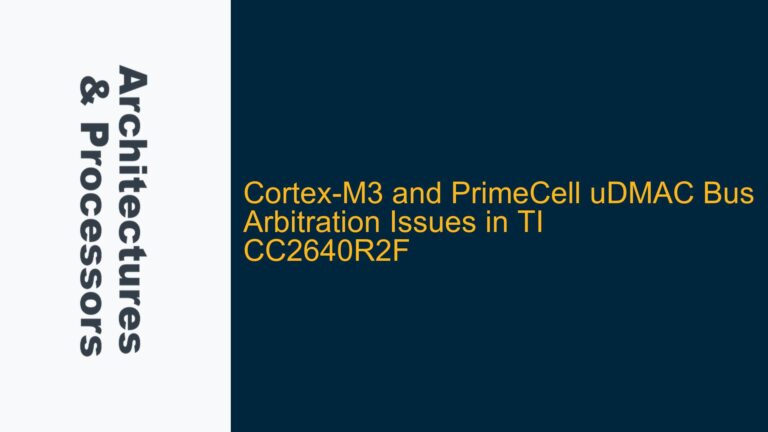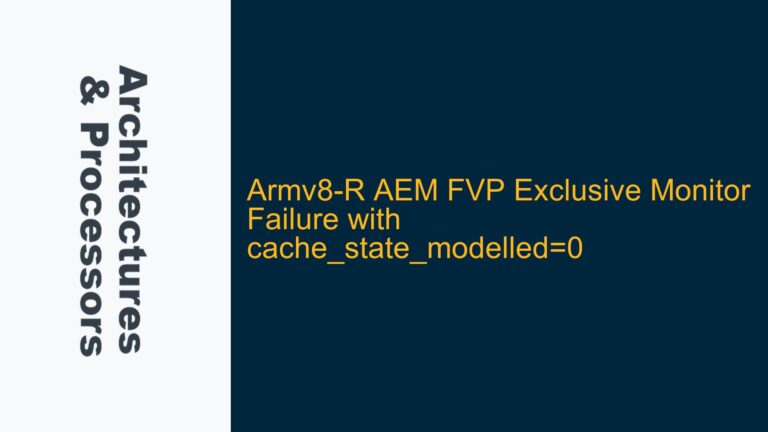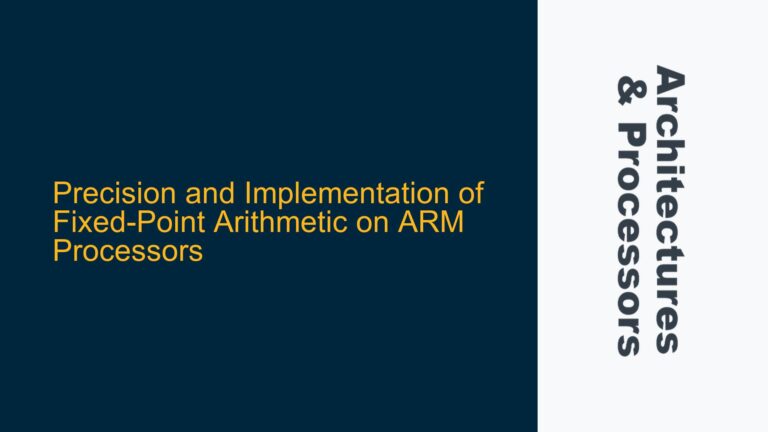Cortex-M0 ROM-to-RAM Program Counter Transition Challenges
The Cortex-M0 microcontroller unit (MCU) is a widely used ARM processor core known for its simplicity and efficiency in embedded systems. One common design scenario involves executing firmware from Read-Only Memory (ROM) upon power-up, followed by a transition to executing firmware from Random-Access Memory (RAM). This transition is typically initiated by setting a program counter jump flag at the end of the ROM firmware execution. However, implementing this transition can be challenging due to the Cortex-M0’s Thumb instruction set architecture and the limitations it imposes on inline assembly usage.
The primary issue arises when attempting to use inline assembly to branch the program counter (PC) from the ROM address space to the RAM address space. The Cortex-M0, being a Thumb-only processor, does not support inline assembly in Thumb code, leading to compilation errors. This limitation necessitates alternative approaches to achieve the desired program counter transition.
Inline Assembly Restrictions and Thumb Code Compilation Errors
The Cortex-M0 processor exclusively executes Thumb instructions, which are 16-bit wide and optimized for code density and efficiency. However, this architecture imposes certain restrictions, particularly when it comes to using inline assembly within C code. The error message "Inline assembler not permitted when generating Thumb code" indicates that the compiler does not support inline assembly in Thumb mode. This restriction is a direct consequence of the Cortex-M0’s instruction set architecture, which lacks the flexibility of more advanced ARM cores that support both ARM and Thumb instruction sets.
The ARM Information Center suggests using #pragma arm and #pragma thumb statements to enclose functions containing inline assembly code. However, this approach is not applicable to the Cortex-M0, as it does not support ARM instructions. Therefore, alternative methods must be employed to achieve the program counter transition from ROM to RAM.
Implementing Function Pointers for Program Counter Transition
One effective solution to the inline assembly restriction is the use of function pointers. By defining a function pointer and assigning it the target RAM address, the program counter can be redirected to the desired location in RAM. This approach leverages the C language’s ability to handle function pointers, thereby circumventing the need for inline assembly.
The following code snippet demonstrates how to implement this solution:
void (*func)(void) = (void (*)(void))0x2001;
func();
In this example, func is a function pointer that is assigned the address 0x2001, which corresponds to the starting address of the RAM firmware. The func(); statement then calls the function located at this address, effectively branching the program counter to the RAM region.
This method is both efficient and compliant with the Cortex-M0’s Thumb instruction set. It avoids the pitfalls of inline assembly while providing a clear and maintainable way to transition the program counter from ROM to RAM.
Detailed Explanation of Function Pointer Implementation
To fully understand the function pointer approach, it is essential to delve into the mechanics of function pointers in C and how they interact with the Cortex-M0’s program counter.
Function Pointer Syntax and Semantics
A function pointer in C is a variable that stores the address of a function. The syntax for declaring a function pointer is as follows:
return_type (*pointer_name)(parameter_list);
In the context of the Cortex-M0, the function pointer is declared as void (*func)(void), indicating that func is a pointer to a function that takes no arguments and returns no value. The assignment (void (*)(void))0x2001 casts the address 0x2001 to a function pointer of the appropriate type.
Program Counter Redirection
When the function pointer func is called using func();, the program counter is set to the address stored in func, which is 0x2001. This action effectively redirects the program counter to the RAM region, where the new firmware execution begins.
Advantages of Function Pointers
Using function pointers offers several advantages over inline assembly:
- Portability: Function pointers are a standard feature of the C language and are supported by all C compilers, including those targeting the Cortex-M0.
- Readability: The use of function pointers results in more readable and maintainable code compared to inline assembly.
- Safety: Function pointers are type-checked by the compiler, reducing the risk of errors that can occur with inline assembly.
Potential Pitfalls and Considerations
While the function pointer approach is effective, there are several considerations and potential pitfalls that must be addressed to ensure a successful implementation.
Address Alignment
The Cortex-M0 requires that function addresses be aligned to even boundaries due to its Thumb instruction set. Therefore, the target address 0x2001 must be even. If the address is odd, the processor will generate a fault. It is crucial to ensure that the target address is correctly aligned before assigning it to the function pointer.
Memory Initialization
Before branching to the RAM region, it is essential to ensure that the RAM firmware has been correctly loaded and initialized. This typically involves copying the firmware from ROM to RAM during the initial boot sequence. Failure to properly initialize the RAM firmware can result in undefined behavior or system crashes.
Stack and Register Setup
When transitioning from ROM to RAM execution, the stack pointer and other critical registers must be correctly set up to ensure a smooth transition. This includes initializing the stack pointer to point to a valid stack region in RAM and ensuring that any necessary registers are preserved or initialized as required by the new firmware.
Debugging and Verification
Implementing a program counter transition from ROM to RAM can be challenging to debug, especially if the transition fails. It is essential to use debugging tools and techniques to verify that the transition is occurring correctly. This may include using breakpoints, watchpoints, and memory inspection tools to ensure that the program counter is correctly redirected and that the RAM firmware is executing as expected.
Step-by-Step Implementation Guide
To assist in the implementation of the ROM-to-RAM program counter transition, the following step-by-step guide provides a detailed walkthrough of the process.
Step 1: Define the ROM Firmware
The ROM firmware is responsible for initializing the system and preparing for the transition to RAM execution. This typically involves setting up the stack pointer, initializing critical peripherals, and copying the RAM firmware from ROM to RAM.
void rom_firmware(void) {
// Initialize stack pointer
__set_MSP((uint32_t)&_estack);
// Copy RAM firmware from ROM to RAM
memcpy((void*)0x2000, (void*)&_sram_firmware, (size_t)&_eram_firmware - (size_t)&_sram_firmware);
// Set program counter jump flag
ready_SRAM = 1;
// Wait for program counter jump flag
while (ready_SRAM == 1);
// Branch to RAM firmware
void (*func)(void) = (void (*)(void))0x2001;
func();
}
Step 2: Define the RAM Firmware
The RAM firmware is the code that will be executed after the program counter transition. This firmware should be designed to operate entirely from RAM and should not rely on any ROM-based functions or data.
void ram_firmware(void) {
// RAM firmware code
while (1) {
// Main loop
}
}
Step 3: Linker Script Configuration
The linker script must be configured to correctly place the ROM and RAM firmware in the appropriate memory regions. This involves defining the memory layout and specifying the sections for the ROM and RAM firmware.
MEMORY
{
ROM (rx) : ORIGIN = 0x00000000, LENGTH = 64K
RAM (rwx) : ORIGIN = 0x20000000, LENGTH = 16K
}
SECTIONS
{
.rom_firmware : {
*(.rom_firmware)
} > ROM
.ram_firmware : {
*(.ram_firmware)
} > RAM
}
Step 4: Compiler and Linker Settings
Ensure that the compiler and linker settings are configured to generate Thumb code and to place the ROM and RAM firmware in the correct memory regions. This may involve setting specific compiler flags and linker options.
arm-none-eabi-gcc -mcpu=cortex-m0 -mthumb -T linker_script.ld -o firmware.elf rom_firmware.c ram_firmware.c
Step 5: Debugging and Verification
Use debugging tools to verify that the ROM firmware correctly initializes the system, copies the RAM firmware, and transitions the program counter to the RAM region. This may involve using a debugger to step through the code and inspect memory and register values.
arm-none-eabi-gdb firmware.elf
(gdb) target remote :3333
(gdb) load
(gdb) break rom_firmware
(gdb) continue
(gdb) step
(gdb) info registers
(gdb) x/10i 0x2001
Conclusion
Transitioning the program counter from ROM to RAM on a Cortex-M0 microcontroller can be challenging due to the processor’s Thumb instruction set and the restrictions on inline assembly. However, by using function pointers, it is possible to achieve this transition in a way that is both efficient and compliant with the Cortex-M0 architecture. This approach leverages the power of the C language to provide a clear and maintainable solution, while avoiding the pitfalls of inline assembly. By following the detailed implementation guide and considering the potential pitfalls, developers can successfully implement a ROM-to-RAM program counter transition on the Cortex-M0.
